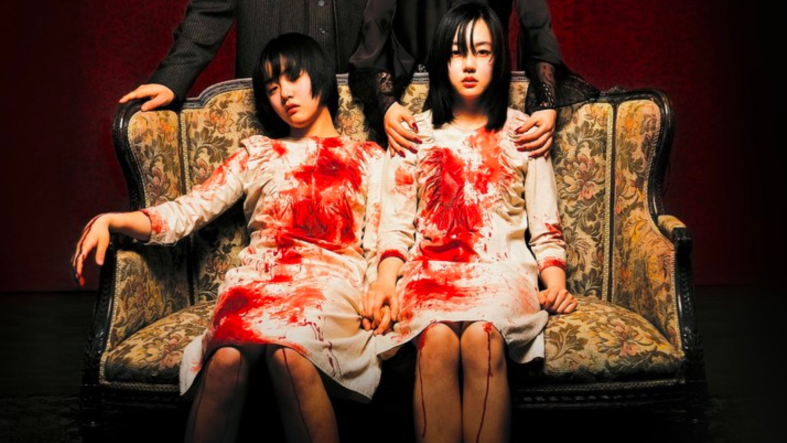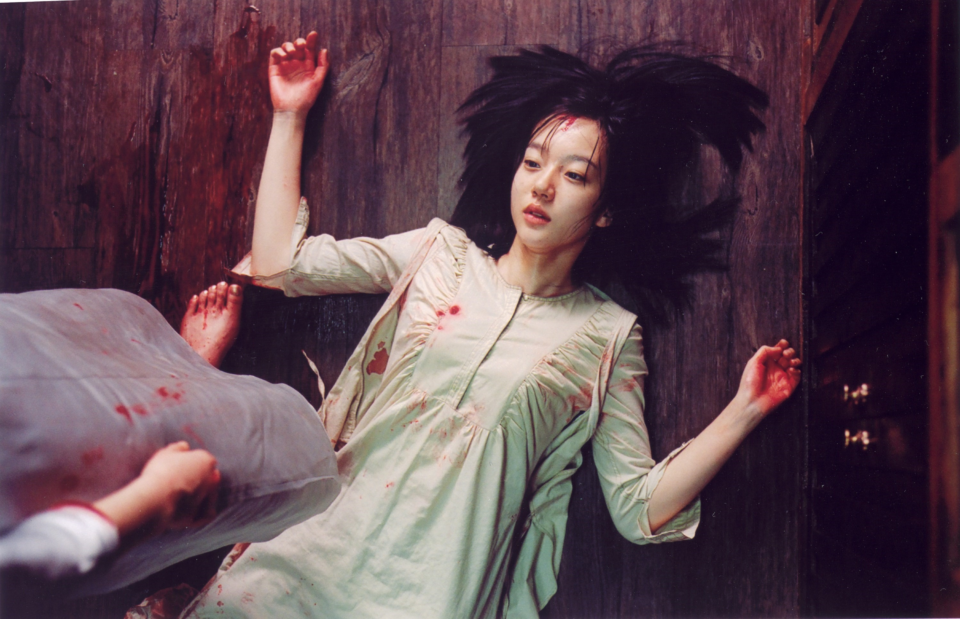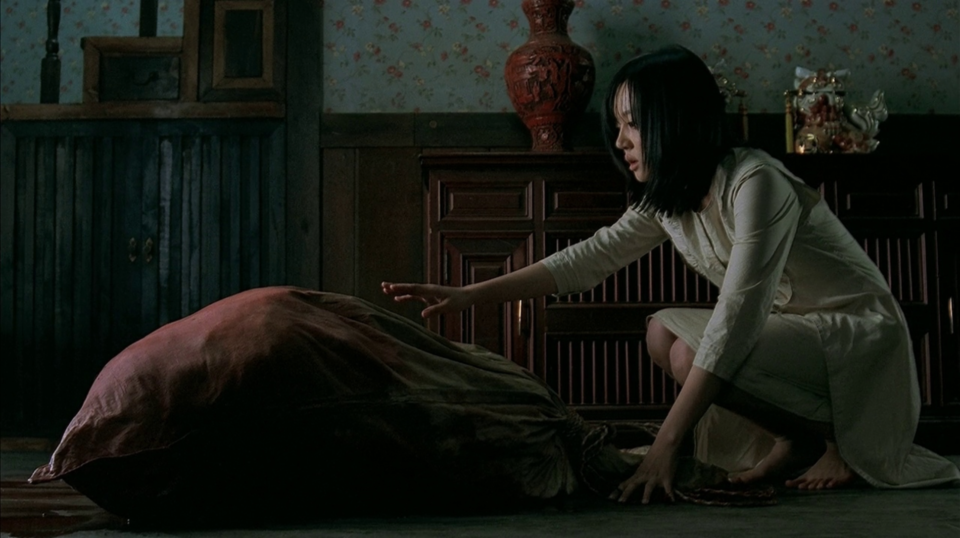‘A Tale Of Two Sisters’: A Korean Horror Masterpiece

Horror is a staple of South Korean cinema, from its sultry femme fatale thrills in 1960s classic The Housemaid through to box office smash hits such as Train To Busan and The Wailing. However, the genre specifically experienced a boom in the 1990s with the release of cornerstone films such as Whispering Corridors, The Quiet Family, and Memento Mori. These films catapulted the country’s national horror cinema into the public eye. Moving into the ’00s, 2003 proved a landmark year for South Korean horror with the release of three critically acclaimed offerings: Park Chan-wook’s widely-lauded bloodbath Old Boy, Bong Joon-ho’s crime thriller Memories Of Murder, and lastly, the topic of this piece, Kim Jee-woon’s haunting masterpiece A Tale Of Two Sisters.
A Tale Of Two Sisters lit up the Korean box office at the time of its release and proved to be a key text in the wider visibility of South Korean cinema across the globe. It became the first Korean film to be screened in the US and changed the trajectory of the entire genre. Us, Get Out, and Nope director Jordan Peele is among the many filmmakers who cite this film as an inspiration, alongside Goodnight Mommy creators Severin Fiala and Veronika Franz. And 20 years since its release, A Tale Of Two Sisters proves it remains as potently chilling since the day it premiered.
Also Read: ‘Devils’ is Body-Swapping the South Korean Way [Fantasia 2023]
Inspired by a Joseon dynasty-era folktale Janghwa Hongryeon jeon, A Tale Of Two Sisters follows Su-mi and Su-yeon, two siblings who return to their imposing gothic-inspired mansion in the countryside after being released from a mental institution. Despite their picturesque surroundings, matters within the household are ugly with the sisters regularly clashing with their stepmother Heo Eun-joo. Meanwhile, their father Moo-hyeon Bae becomes increasingly disconnected from the family unit. As a series of mysterious and malevolent incidents begin to take place in the house, Su-mi uncovers dark secrets her parents endeavored to keep hidden.
Combining a blend of haunted house horror, psychological trauma, and familial bonds, A Tale Of Two Sisters utilizes a number of familiar horror tropes while subverting others to keep the audience on their toes for the two decades since its release. The film has its roots in the popular folktale Janghwa Hongryeon jeon, which was adapted for cinema in 1924, 1936, 1956, 1962, 1972, and 2009 in The Uninvited. However, Jee-woon’s retelling swaps the folktale’s happy ending for a decidedly more macabre one in fitting with other Korean horror offerings.

Another folkloric staple Jee-woon implements in the film is that of the long-haired, vengeful, female ghost enraptured by tragedy and rage prevalent across East Asian cinema. Aside from folklore, A Tale Of Two Sisters reflects on Korean cinema as a whole, with its sense of creeping dread and musings on trauma hailing from the golden age of Korean cinema.
Also Read: ‘Project Wolf Hunting’: New Korean Horror Film Goes For The Jugular [Watch]
The setting of the film feels familiar to audiences across the world despite being based squarely in Korea. The isolated country house, the evil stepmother treating two young girls poorly, ghostly entities, and a boatload of secrets hidden in every nook and cranny of the estate would not be out of place in a classic gothic haunted house tale. Scenes often go by without a word of dialogue, instead focusing on the sumptuous setting of the house, with its long, foreboding corridors, rich, dark colors, ornate furniture, and abundant floral imagery.
Peppered with dizzying tracking shots and Lee Byung-woo’s evocative score, A Tale Of Two Sisters’ exquisite cinematography lays the foundation of the film’s unbearably tense and terrifying atmosphere, with Eun-joo jolting the audience to a stark realization with one simple line as they gaze upon the delectable imagery: “The world isn’t as sweet as you picture it.”

It’s a message that permeates the entirety of A Tale Of Two Sisters, with its stunning visuals papering over a dark and rotten narrative within. Even in the dinner scene, we see how Eun-joo and Moo-hyeon put on a happy facade in front of their guests. All the while their marriage is a joyless one, and the children of the home fear for their lives. The horror of family and the monstrous mother is a key part of making this dark fairytale feel so evergreen. Two extremes of the human psyche and the home are shown through the clashing personalities of Moo-hyeon as the passive father who refuses to address how his past actions have affected others, and the violent and cruel stepmother Eun-joo whose womanhood alongside her stepdaughters is also imperative to the film’s horrific elements.
Also Read: 6 Korean Films About Diabolical Serial Killers
Feminine sexuality is often demonized through popular culture, especially in young, pubescent girls. There’s an obsession with women losing a pre-conceived concept of innocence in favor of discovering their sexuality. In A Tale Of Two Sisters, the blood-red home decor and costumes worn by the women within the film can be seen to represent menstruation. One ghost looms over Su-mi shown to have blood trickling down her leg before a hand crawls from beneath her dress. Eun-joo mentioned that she and Su-mi have gotten their period at the same time in the film, a statement that is met with horror by the latter. Menstruation is seen as monstrous within A Tale Of Two Sisters as its two menstruating characters, Su-mi and Eun-joo, are seen committing the film’s most brutal, traumatic acts towards each other, as well as those around them.

The fear surrounding female sexuality gives way to the fear of pregnancy and motherhood which A Tale Of Two Sisters addresses through Su-mi and her sense of being in danger in the home. A recurring motif within the film is floral imagery within the female characters’ clothing and the home decor. Flowers are often used as a symbol to suggest women have ‘bloomed’ into sexual maturity and the age at which they can carry and bear children. These repeated images suggest that these women cannot escape the home and thus the path to parenthood.
Also Read: Fantasia Review: South Korean Thriller ‘The Devil’s Deal’ Makes Politics Scary
Later in the film, when Su-mi is investigating mysterious sounds in the house, she comes across a female ghost oozing clear fluid as a baby cries. The fluid could be seen to represent amniotic fluid and the movement of the ghost suggests motherhood is terrifyingly creeping towards Su-mi. The low-key lighting used in connection with the ghost’s presence enmeshes the entity with the house, as if the two become one, and Su-mi cannot escape the life, and pain, that her mother before her led. It is a theme that remains starkly prevalent today, particularly in a post-Roe world, where reproductive rights and bodily autonomy are being stripped from those with wombs.
Korean horror often likes to blend the twin fears of the supernatural and natural horror. A Tale Of Two Sisters is no different as ghosts and humans each provide fright throughout its spine-chilling narrative. There is no separation between the ghosts living in the home and the skeletons in the closet that torment the human characters.
Also Read: ‘I Saw the Devil’ Serves Up Bone-Chilling Winter Terror
Ultimately, A Tale Of Two Sisters is a story that deals with the blurring of realities and how what we see on the surface is not always indicative of what lurks below. Death, birth, parenthood, infidelity, and navigating different family units are all tackled within the film’s narrative and the horror found in this reality is at times more chilling than any ghost or ghoul we find lurking under the sink or within a wardrobe. Evil can be human, just as much as it can be supernatural. Plus, it can come in the form of both adults and young people alike.
The seeds for the success of Korean cinema, such as the Academy Awards given to the likes of Youn Yuh-Jung in Minari and Joon-ho’s 2020 hit Parasite, were sewn in 2003 with the creation of Jee-woon’s outstanding A Tale Of Two Sisters. The beautifully morose film combines picturesque tropes from gothic cinema with brutal conventions of horror and themes rooted in realism that evoke genuine fear. And that fear continues to inspire dread in new generations of horror fans.
Categorized:Editorials

